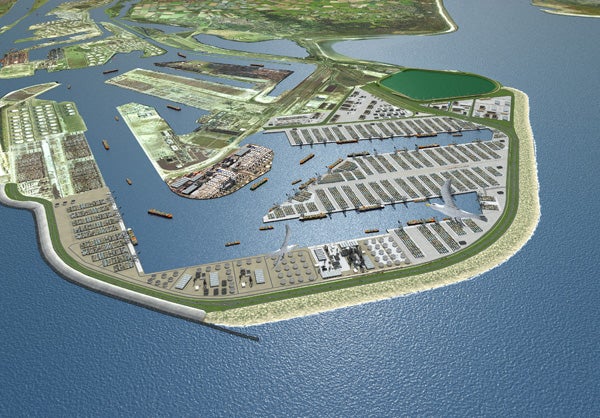
Shell, through its subsidiaries Shell Nederland and Shell Overseas Investments, has made final investment decision to build a new renewable hydrogen plant in the Netherlands.
The new green hydrogen plant, dubbed Holland Hydrogen I, will be constructed on the Tweede Maasvlakte (Maasvlakte 2) in the Dutch port of Rotterdam.
It will be designed to feature a 200MW electrolyser and capable of producing up to 60,000kgs of renewable hydrogen per day.
Once operational in 2025, the Holland Hydrogen I will become the largest renewable hydrogen plant in Europe, said the company.
Shell emerging energy solutions executive vice president Anna Mascolo said: “Holland Hydrogen I demonstrates how new energy solutions can work together to meet society’s need for cleaner energy.
“It is also another example of Shell’s own efforts and commitment to become a net-zero emissions business by 2050.
“Renewable hydrogen will play a pivotal role in the energy system of the future and this project is an important step in helping hydrogen fulfil that potential.”
Shell intends to use the electricity generated at its partly owned Hollandse Kust Noord offshore wind project, to produce the green hydrogen at Holland Hydrogen I facility.
The produced renewable hydrogen will be supplied to the Shell Energy and Chemicals Park in Rotterdam, through the HyTransPort pipeline.
The renewable hydrogen supplied from Holland Hydrogen I is said to replace certain volume of grey hydrogen usage in its refinery.
In addition, the green hydrogen will partially decarbonise the facility’s petrol and diesel and jet fuel production, said Shell.
Earlier this month, Emerging Power (EPI), the renewable energy unit of Nickel Asia (NAC), has teamed up with Shell, to enhance renewable energy capacity in Philippines.
Under the Joint Venture (JV), the two companies will jointly develop, own, operate, and maintain renewable energy projects in the country.
The JV aims to achieve 1GW by 2028, and contribute up to 3 GW into the country’s renewable capacity through a series of projects in Luzon and Visayas.






